Filter by
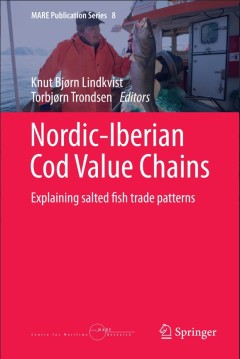
Nordic-Iberian Cod Value Chains:Explaining salted fish trade patterns
This book is a multidisciplinary analysis of cultural, regional and economic factors affecting international food trade. Contributions from expert authors illuminate the importance of food culture prevailing in the market as a basis for decisions about food trading. Central concepts include value chains, conventions and public infrastructure and their importance for international trade. The …
- Edition
- 1
- ISBN/ISSN
- 978-3-319-16404-5
- Collation
- X, 223
- Series Title
- MARE Publication Series
- Call Number
- -
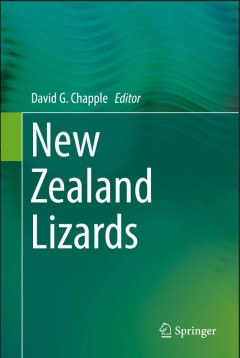
New Zealand Lizards
This edited volume is a timely and comprehensive summary of the New Zealand lizard fauna. Nestled in the south-west Pacific, New Zealand is a large archipelago that displays the faunal signatures of both its Gondwanan origins, and more recent oceanic island influences. New Zealand was one of the last countries on Earth to be discovered, and likewise, the full extent of the faunal diversity pres…
- Edition
- 1
- ISBN/ISSN
- 978-3-319-41672-4
- Collation
- XVI, 375
- Series Title
- -
- Call Number
- -
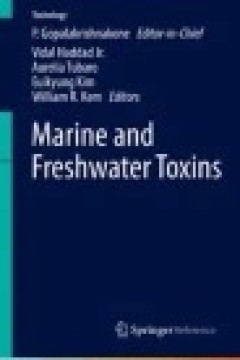
Marine and Freshwater Toxins
This book presents the structure of the main toxins of aquatic origin, their distribution, producing species and vectors, their mechanisms of action, the clinical aspects of envenomation in humans, their effects in laboratory or wild animals, their toxicokinetic properties, including the relevant treatment, detection methods and regulatory aspects for management. The work also presents the main…
- Edition
- -
- ISBN/ISSN
- 978-94-007-6418-7
- Collation
- -
- Series Title
- -
- Call Number
- -
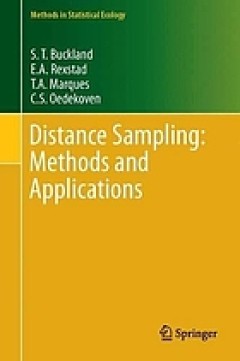
Distance sampling : methods and applications
In this book, the authors cover the basic methods and advances within distance sampling that are most valuable to practitioners and in ecology more broadly. This is the fourth book dedicated to distance sampling. In the decade since the last book published, there have been a number of new developments. The intervening years have also shown which advances are of most use. This self-contained boo…
- Edition
- -
- ISBN/ISSN
- 9783319192192
- Collation
- xv, 277 pages
- Series Title
- -
- Call Number
- 591.7

Animal Metropolis : Histories of Human-Animal Relations in Urban Canada
Animal Metropolis brings a Canadian perspective to the growing field of animal history, ranging across species and cities, from the beavers who engineered Stanley Park to the carthorses who shaped the city of Montreal. Some essays consider animals as spectacle: orca captivity in Vancouver, polar bear tourism in Churchill, Manitoba, fish on display in the Dominion Fisheries Museum, and the racia…
- Edition
- -
- ISBN/ISSN
- 978-1-55238-866-2
- Collation
- -
- Series Title
- -
- Call Number
- 636 ANI

Vertebrates and Invertebrates of European Cities:Selected Non-Avian Fauna
Vertebrates and Invertebrates of European Cities: Selected Non-Avian Fauna is the first known account of the vertebrate and invertebrate fauna of several cities in Europe and throughout the rest of the world. It excludes birds, which are described in a companion volume. The book contains eleven chapters about nine cities distributed throughout Europe. The chapters start with the history of the …
- Edition
- -
- ISBN/ISSN
- 978-1-4939-1698-6
- Collation
- XX, 700
- Series Title
- -
- Call Number
- -
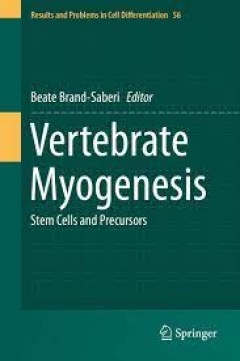
Vertebrate Myogenesis Stem Cells and Precursors
This book addresses the differentiation control of skeletal muscle in different locations of the vertebrate body Particular attention is paid to novel regulatory molecules and signals as well as the heterogeneity of origin that have revealed a developmental overlap between skeletal and cardiac muscle. Different functional muscle groups are the product of the evolution of the vertebrate classes,…
- Edition
- -
- ISBN/ISSN
- 978-3-662-44608-9
- Collation
- 2 b/w illustrations, 23 illustrations in colour
- Series Title
- -
- Call Number
- -
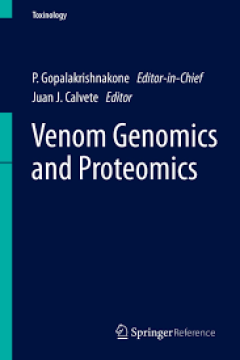
Venom Genomics and Proteomics
This volume provides the reader with recent advances in the fields of molecular toxinology, the biotechnological applications of venom toxins, and antivenom production. The content of the twenty chapters of Venom Genomics and Proteomics illustrates not only the enormous progress made since the implementation of omics technologies in the field of toxinology, but one also realizes the road still …
- Edition
- -
- ISBN/ISSN
- 978-94-007-6416-3
- Collation
- XXI, 454
- Series Title
- -
- Call Number
- -
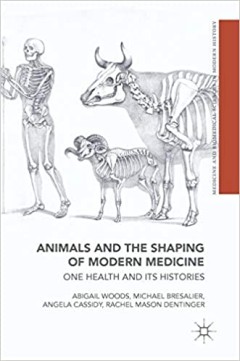
Animals and the Shaping of Modern Medicine: One Health and its Histories
This book breaks new ground by situating animals and their diseases at the very heart of modern medicine. In demonstrating their historical significance as subjects and shapers of medicine, it offers important insights into past animal lives, and reveals that what we think of as ‘human’ medicine was in fact deeply zoological. Each chapter analyses an important episode in which animals ch…
- Edition
- -
- ISBN/ISSN
- 978-3-319-64337-3
- Collation
- -
- Series Title
- -
- Call Number
- 636 ANI
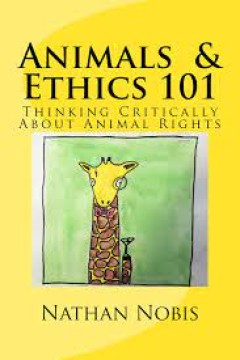
Animals & Ethics 101 : Thinking Critically About Animal Rights
This book provides an overview of the current debates about the nature and extent of our moral obligations to animals. Which, if any, uses of animals are morally wrong, which are morally permissible (i.e., not wrong) and why? What, if any, moral obligations do we, individually and as a society (and a global community), have towards animals and why? How should animals be treated? Why? We will…
- Edition
- -
- ISBN/ISSN
- -
- Collation
- -
- Series Title
- -
- Call Number
- 636 NOB a
 Computer Science, Information & General Works
Computer Science, Information & General Works  Philosophy & Psychology
Philosophy & Psychology  Religion
Religion  Social Sciences
Social Sciences  Language
Language  Pure Science
Pure Science  Applied Sciences
Applied Sciences  Art & Recreation
Art & Recreation  Literature
Literature  History & Geography
History & Geography